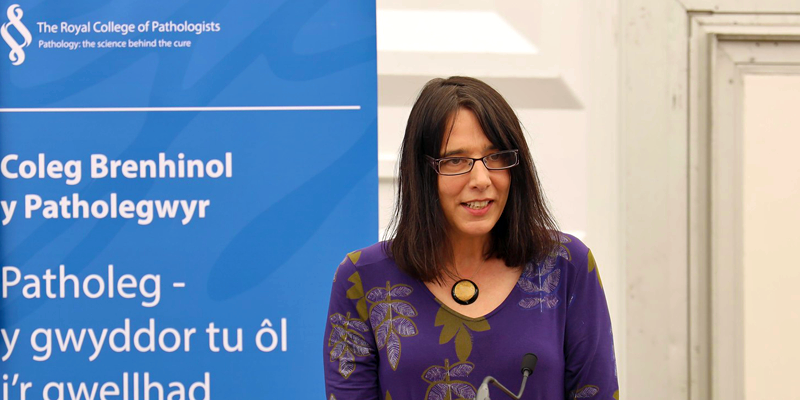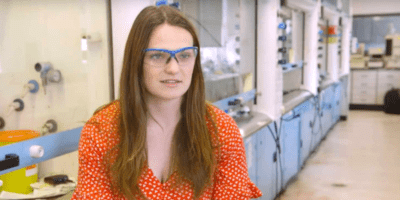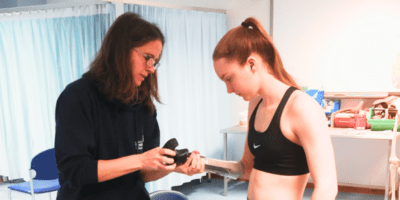Professor Angharad Davies is a distinguished academic at the Royal College of Pathologists. With a wealth of experience in the field, she has made significant contributions to education and training in the field of antibiotic use, and to the understanding of various diseases including cryptosporidiosis. Her expertise in pathology has earned her recognition as a leading figure in the medical community, having been elected to the role of Vice-President (Learning) at the Royal College of Pathologists in 2020 for a three-year term.
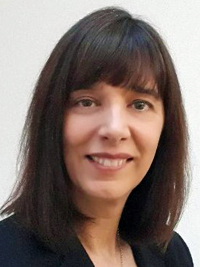
“Most people think that ‘pathology’ is all about dead bodies — post-mortems and forensic cases, as made famous by TV shows like ‘Silent Witness’. Actually, this is only one very small part of pathology. The vast, vast majority of pathology is all about helping living patients — we just tend to be more ‘behind the scenes’ than surgeons and physicians.”
Fascinating and enriching
After attending a Welsh-medium comprehensive school in North Wales in the 1980s, I studied medicine at Cambridge University. As a junior doctor, I worked in all sorts of specialties including accident and emergency and cardiology.
Since I was a child, I’d been fascinated by microbes and infection, so I decided to specialise in medical microbiology, training at the Royal Free Hospital in London. I then did a PhD at University College London, on the bacteria that cause tuberculosis, how they can lie dormant in the human body and what makes them ‘wake up’ again and cause disease.
I always planned to return to Wales. I was offered a job in the (then new) medical school in Swansea. My role has involved clinical work, research and teaching in infection, and I’ve been able to combine these roles with raising our three children. The balance of clinical, academic and parenting duties has varied and evolved over the years. It’s not possible to do everything all at once!
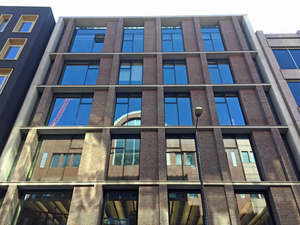
In 2020 I was elected Vice-President for Learning of the Royal College of Pathologists, which sets UK professional and training standards, and runs the professional exams in pathology. I am nearly at the end of the three-year term and it has been a fascinating and enriching professional journey.
A day in the life of a medical microbiologist
On a typical day, a medical microbiologist would usually go first to the clinical lab, checking for urgent results from samples that the lab scientists have processed overnight or first thing in the morning. This includes things like blood samples that have bacteria growing in them, or meningitis samples. These patients are very ill, and the microbiologist would immediately phone the doctor looking after that patient to tell them the result in person and advise them what to do next in terms of treatment and any further tests.
Then the phone calls start to come through. It’s very busy with calls from ward doctors, GPs and nurses asking for specialist advice on their patients.
The microbiologist will then normally visit the wards, to see particular patients who they have been consulted on, and the intensive care unit. In intensive care they will meet with one of the doctors there and together review every patient, with their test results, to make sure everyone is on the most appropriate treatment from an infection point of view. The microbiologist may also attend other multi-disciplinary team meetings for patients with infections which are complicated to treat.
By mid-afternoon, the laboratory scientists have had time to process the day’s samples, and enter the results on the computer system. Medical microbiologists used to review every single result before they were authorised and released — nowadays there are so many that this isn’t feasible, but the medical microbiologist will still review all results from important or serious infections, and make sure the patient’s own doctor is aware of them and acting on them.
Nowadays, antibiotic resistance is one of the biggest challenges in medicine worldwide, including in the UK. So, an important part of our work is focused on ensuring that antibiotics are used correctly and only prescribed for patients who need them. We also advise on infection prevention and control. This involves all departments — there’s no part of the hospital a microbiologist has not visited! This doesn’t just include wards and operating theatres, but also kitchens, laundries, clinical waste areas and anywhere else you can think of. This is quite a unique aspect of medical microbiology — I don’t think any other doctors ever set foot in these places!
In the evening, we switch to an on-call service, which means a microbiologist is still available for advice all night until the next morning — and can expect to be called regularly, including in the small hours.
More than a TV drama
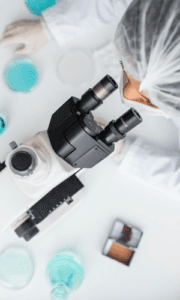
All the laboratory diagnostic specialties — for example haematology (blood disorders), microbiology (infections), cellular pathology (diagnosing biopsies from patients) and others — come under the umbrella of pathology.
Another misconception is that pathologists don’t see patients, or are poor communicators. Many see patients every day, for example in my speciality of medical microbiology, it’s usual to go to the intensive care unit every day to review all the patients and to go and see patients on wards who have complicated infections. As for good communication, it’s an absolutely key attribute, because we work with and advise staff of all kinds across the entire hospital and in the community.
Ensuring all groups are represented and included in the profession
The pathology workforce is very diverse, and in my experience generally very inclusive and welcoming, compared perhaps to some of the more high-profile medical or surgical specialties. Jobs are relatively family-friendly (for medicine), with opportunities for part-time and flexible working. However, there is always likely to be some out-of-hours work – most clinical pathology services operate with 24-hour availability for urgent advice, and in medical microbiology this can be pretty busy.
New NHS initiatives mean that junior doctors are entitled to train part-time if they choose to, without needing a ‘reason’ such as caring responsibilities. The hope is that this will mean more diversity in those training part-time, including more men, so that this is not seen as an option for ‘mothers only’ in the way that it once was.
Of course, there is always room for improvement, and at the Royal College of Pathologists, we have established an EDI Network to find ways of ensuring all groups are represented and included in our work. We’ve also been working on ways to make our exams more inclusive for those with neurodiversity. Our exams are very challenging and intense, and can go on for up to three days for a single exam — so we have been establishing appropriately tailored reasonable adjustments.
Pathways into pathology
I can honestly say that pathology is a great career choice for either doctors or life scientists. There are plenty of specialties to choose between and it’s a very rewarding way to combine scientific skills, patient care and people skills — multi-disciplinary teamwork and communication are a key part of the job. You will be in high demand and can choose to work pretty much anywhere in the country, with opportunities for research and teaching too. So, I would absolutely say, go for it!
There are medical doctors and two main groups of scientists in pathology — clinical scientists and biomedical scientists. The training and career pathways are different for each. Medical doctors enter at various points after their initial junior doctor training. This all means it can seem pretty complex but there’s lots of excellent information on pathology careers and pathways on the Royal College of Pathologists’ website and the Institute of Biomedical Science website, and I would recommend starting there.
If you can, try to organise spending some time in a clinical diagnostic laboratory too, to find out more.
Coming up next
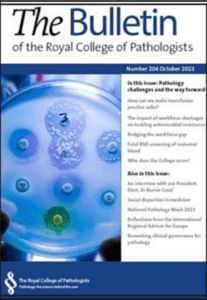
On a personal note, I’m looking forward to the Christmas holidays when my eldest child will be back after her first term away at university. It will be lovely to have the whole family back under one roof!
Main image credit: © Swansea University
Royal College of Pathologists image credit: https://www.flickr.com/photos/dgeezer/48783820703
Microscope image credit: Image by Freepik
Medics image credit: Image by rawpixel.com on Freepik

